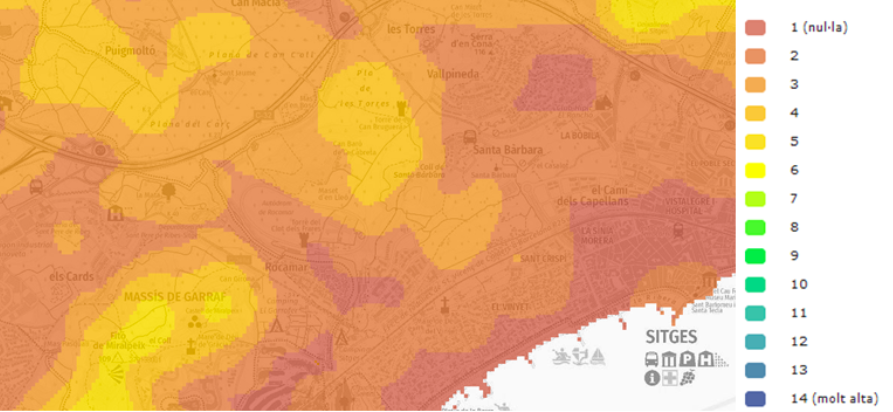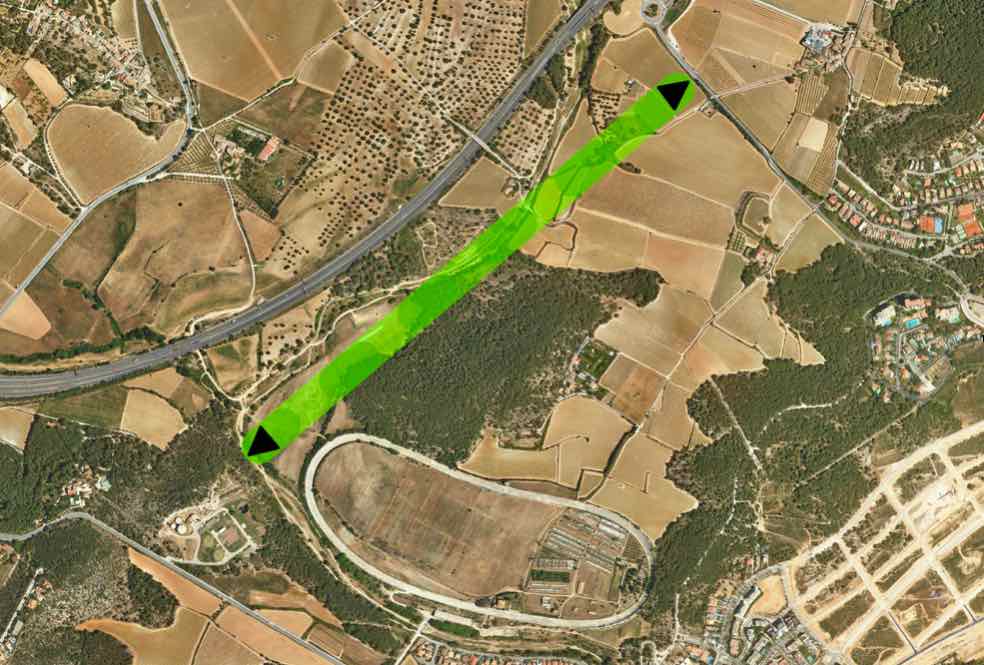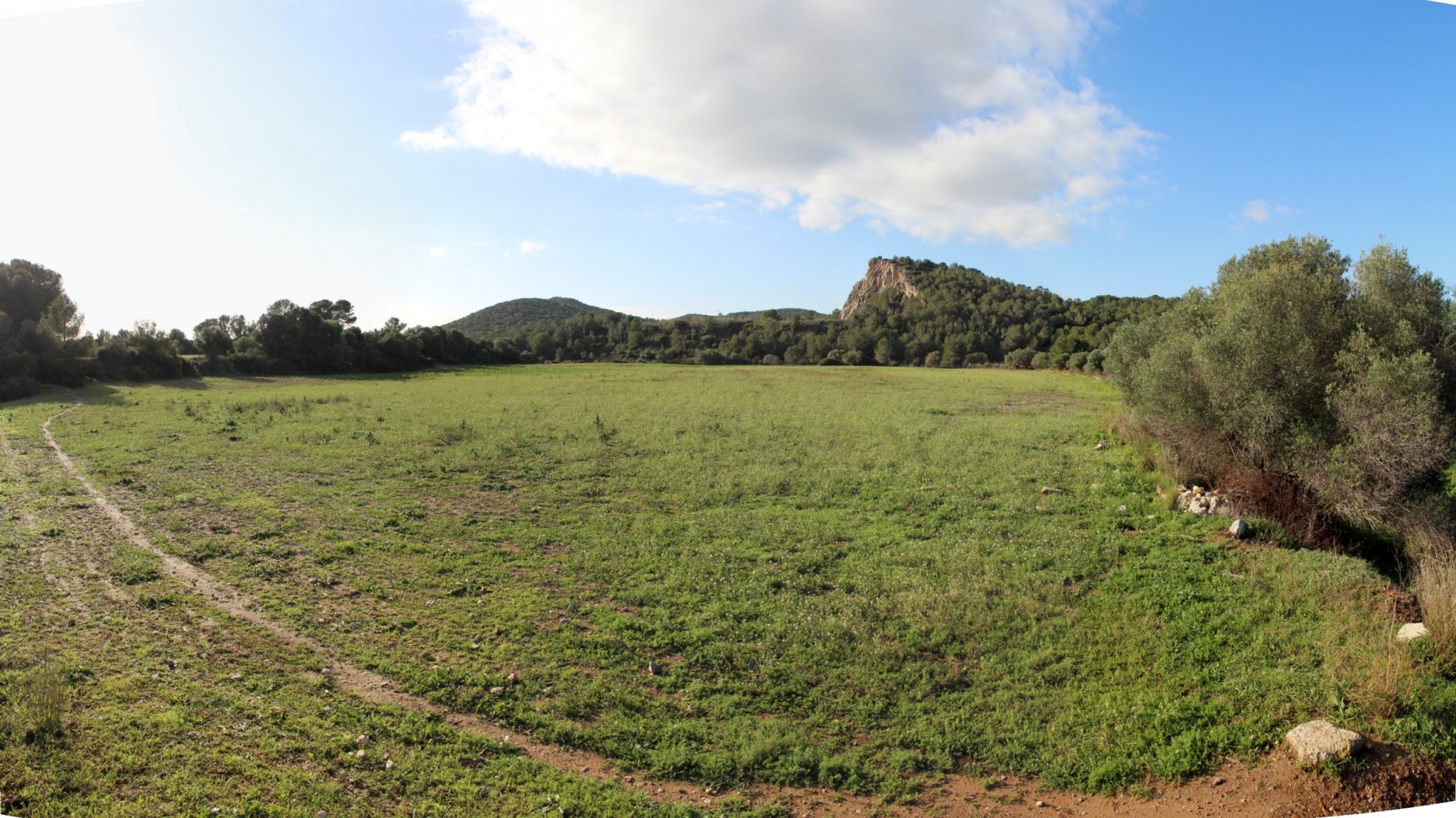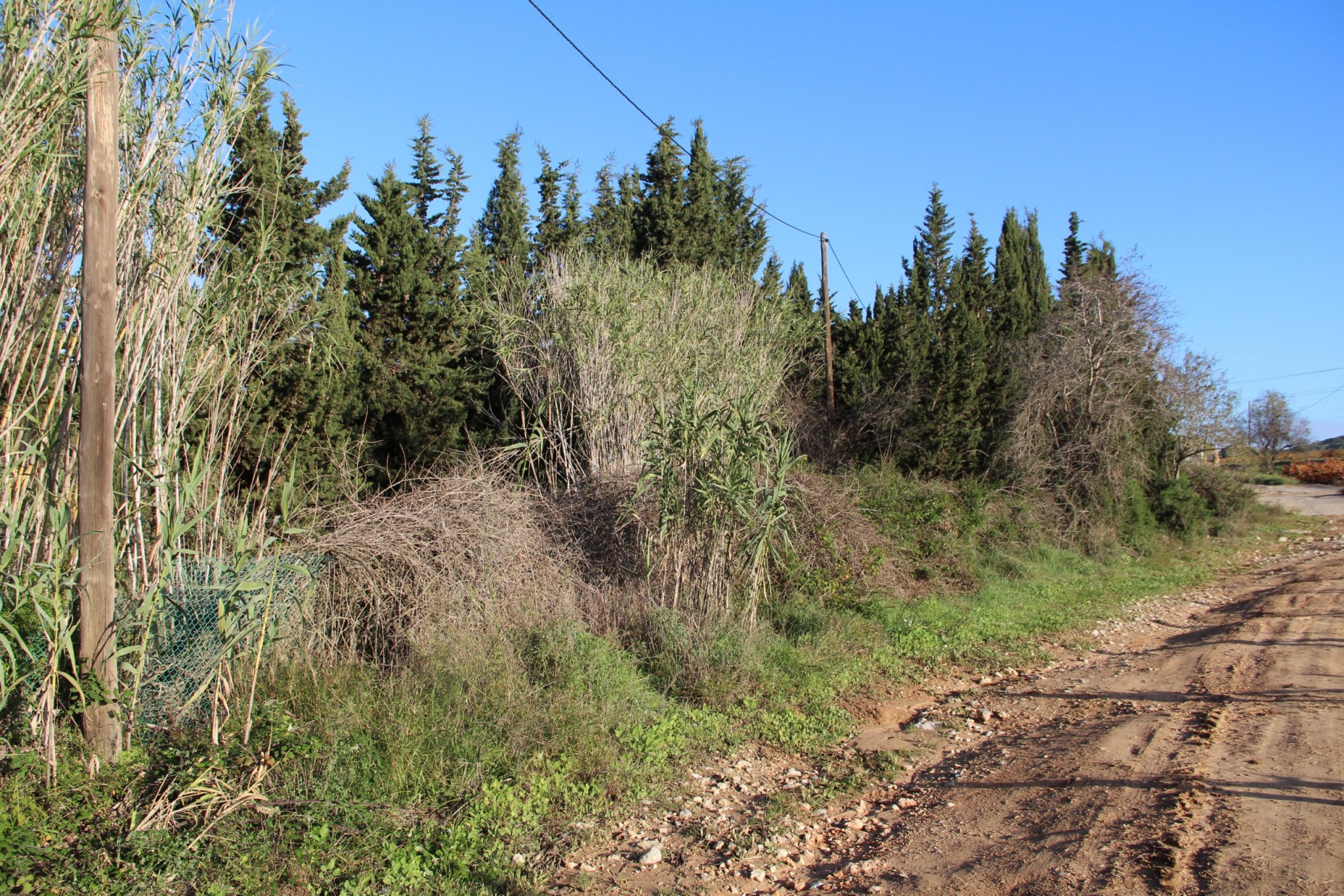The Riera de Ribes, forests and open spaces that surround the Autodrome Terramar make the site an important part of the local area’s ecological connectivity. The environmental documentation drafted by Traça broadly addresses the subject, and it is, in fact, one of the specific objectives of the Autodrome restoration project. We seek to “preserve and enhance the areas of importance for environmental connectivity, improving the ecological connectivity with the Riera de Ribes and nurturing the natural value that has led to it becoming a protected area”.
What is the current situation? Low connectivity index
As we can see in the land connectivity index prepared by the Catalan Department of the Region and Sustainability and the Natural Environment Planning Service, the results in the area of Sant Pere de Ribes, Sitges, Vilanova i la Geltrú show that general land connectivity is rather low. This has mainly been caused by the development of these towns and their roads. In fact, the C-32 road is a significant barrier between the Parque del Garraf and the Els Colls-Miralpeix Area of Natural Interest. This has caused the area to gradually fragment, and ecological connectivity has reduced.
This index does not get any better in the area around the Autodrome, and in the western Garraf, there is no significant ecological land connector south of the C-32. This is despite the fact that the Riera de Ribes is a recognised complementary river connector. Due to urban development, connectivity is especially low in the area of Minivilles, where a small part of the hotel area is planned.
Image: Ecological Connectivity Index. Immediate surroundings of the Autodrome

Source: Ecological Connectivity Index. Hipermapa
What steps have been taken to preserve the area’s current connectivity?
Despite the current situation, the environmental study carried out by Traça and the project’s urban plan both propose a series of measures to minimise any harm done to the site’s ecological connectivity. These include improving connectivity in the west of the site, both in the forests and in the Riera de Ribes (see image). Here are 10 of the key measures included in our plans:

1. Regarding the vines that will be affected in the area that will change use, wooded strips will be planted to encourage the movement of wildlife in the area. The farming area that will be lost in this area will be compensated for with the planting of 50% more farming land nearby and a hectare of organic farming soil to the north of the Autodrome.
2. The terraces and stone walls that currently exist will be restored and maintained, and new vegetation will be planted on the edges of the terraces.
3. We will plant more local species to improve connectivity in both the Riera and other areas of the site. For example, we intend to create a transitional habitat between the gallery forest and pine forest to improve connectivity between the two habitats.

4. We will carry out reforestation work to increase the size of the Can Baró forest.
5. We plan to improve the connectivity of the Riera de Ribes as part of the restoration plan, which you can read more about here.

6. We plan to improve the path of the Clot dels Frares stream, making it wider, freeing it from the constraints by buildings and removing any invasive plant species.

7. The nature systems within the Autodrome will be connected with those in the surrounding area, improving the regional environment and further integrating the facilities on site.
8. Measures will be discussed regarding small or micro-fauna. These will focus on the C-246A road, which is one of the barriers to ecological connectivity in this area, and the Riera de Ribes, where we will look to install systems to improve permeability so as to promote the numbers of amphibians and reptiles.
9. Any fencing used will be designed so as not to impede the movement of wildlife or reduce the area’s ecological connectivity.
10. The area on the edge of the Riera de Ribes will be improved and turned into a walking route. Currently, only private vehicles can pass through here, and we plan to change this so that only walkers or cyclists will be allowed.
In addition to these measures, we have worked with a number of organisations and experts to ensure that in the event that activity were to cease on the site, it remains possible to restore the area’s prior nature and landscape.
For more information, please feel free to send us your questions using the Contact page.



